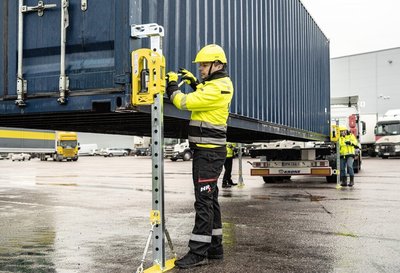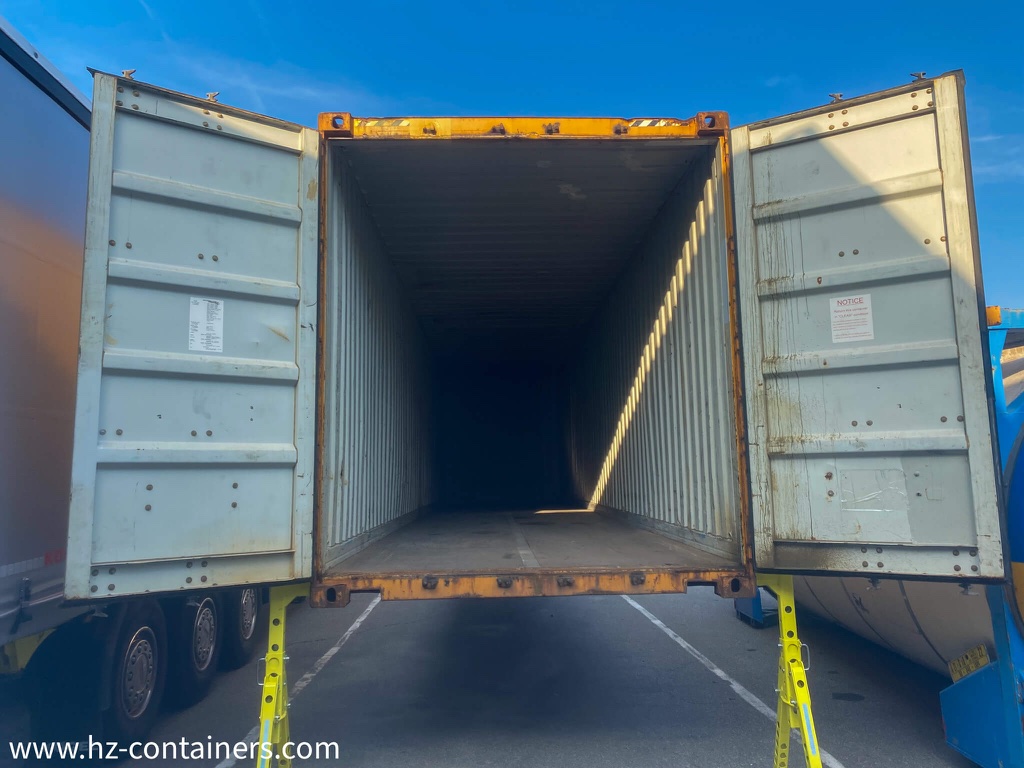The Art of Truck Maneuvering with Shipping Containers on Legs
Shipping containers have revolutionized global logistics, offering versatility and standardization that have propelled global trade. Among the many innovations in container transportation, container legs, such as those produced by ConFoot, have emerged as a game-changing solution. Container legs enable containers to stand independently, eliminating the need for heavy equipment like cranes during loading and unloading. However, this setup introduces specific considerations for truck maneuvering, particularly regarding the space required and the timing of turning movements. In this blog post, we delve into the technical aspects of truck manipulation when dealing with shipping containers on legs.
Understanding Shipping Container Legs
Container legs, such as ConFoot’s innovative systems, are designed to support the weight of a fully loaded shipping container, allowing it to stand securely without external support. These legs are typically made of high-strength steel, ensuring durability and stability even under heavy loads. The legs are collapsible or detachable, facilitating easy transport and storage when not in use.
Advantages of Container Legs:
- Efficiency: Eliminates the need for cranes or other lifting equipment, reducing costs and improving turnaround times.
- Mobility: Enables containers to be placed almost anywhere, including uneven or remote sites.
- Flexibility: Ideal for temporary storage or operations where permanent infrastructure is unavailable.
Disadvantages:
- Space Requirements: Requires sufficient ground space for deployment and truck maneuvering.
- Weight Limitations: May not support extremely heavy containers without specialized designs.
Manipulating Trucks with Containers on Legs
When a container is standing on legs, the process of attaching a truck and maneuvering out of the space requires careful planning. Several factors influence the operation, including the container’s weight, the terrain, and the truck’s turning radius.
Step-by-Step Guide to Maneuvering:
Aligning the Truck: The truck must approach the container in a straight line to ensure proper alignment with the container’s locking points. Misalignment can cause damage to the legs or container and may pose safety risks.
Engaging the Locking Mechanism: Once aligned, the truck’s chassis locks onto the container. Modern systems often include automated locking mechanisms to simplify this process.
Raising the Container: The truck’s suspension system or hydraulic jacks lift the container slightly off the legs, transferring the weight onto the truck.
Retracting the Legs: The container legs are retracted or detached, depending on the design. ConFoot legs, for example, are lightweight and easy to handle, simplifying this step.
Maneuvering Out: This is the most critical phase. The truck driver must ensure sufficient clearance to avoid collisions with the container legs or surrounding obstacles.
Space Requirements for Truck Maneuvering
The space required for a truck to maneuver with a container on legs depends on several factors, including the truck’s length, the container’s size, and the turning radius. As a general rule, the truck requires a space at least twice its length to execute a turn safely.
Key Considerations:
Turning Radius: The truck’s turning radius determines the minimum space required for a turn. Longer trucks have larger turning radii, necessitating more space.
Container Size: A standard 20-foot container requires less space than a 40-foot container. However, the difference is often negligible when considering the total space needed for maneuvering.
Ground Conditions: Uneven or slippery surfaces can complicate maneuvering. It’s essential to ensure that the ground is level and stable.
Timing of Turns: The driver can begin turning only after clearing the container legs. Premature turning risks damaging the legs or destabilizing the container.
Practical Tips for Drivers
Plan Ahead: Assess the site before arriving to determine the best approach and exit routes.
Communicate: Coordinate with site personnel to ensure a clear path and avoid obstacles.
Use Spotters: Having a spotter guide the driver can prevent accidents and facilitate smoother operations.
Practice Patience: Rushing the process increases the risk of errors and accidents.
The Role of ConFoot Container Legs
ConFoot’s container legs are designed with practicality and safety in mind. Their lightweight yet robust construction makes them an ideal choice for various applications. By reducing reliance on heavy equipment, ConFoot legs not only cut costs but also enhance flexibility and efficiency.
Why Choose ConFoot Legs?
- Ease of Use: Quick and simple setup.
- Durability: Engineered to withstand heavy loads and harsh conditions.
- Portability: Lightweight design ensures easy transport and storage.



